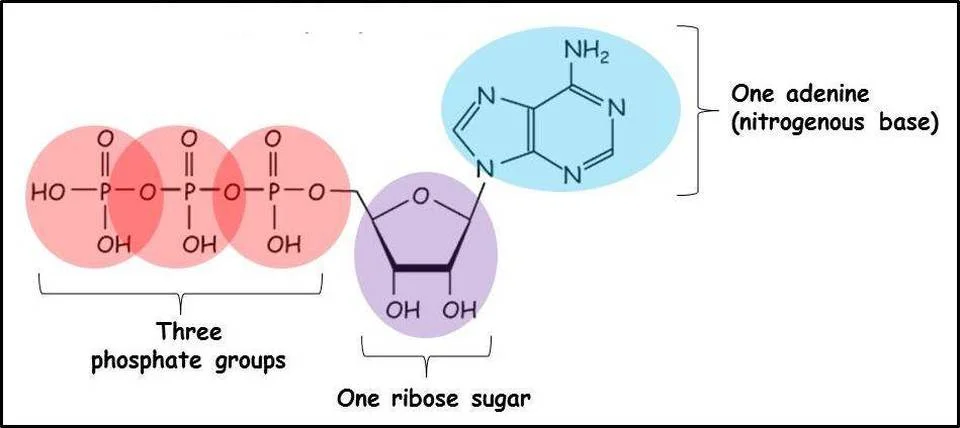An Introduction to Energy Systems
Bioenergetics is the study of energy systems in the human body. Rock climbing is a unique sport in this sense, as it does not rely solely on one energy system for sport performance. Unlike other sports such as marathon running or power lifting, a day of rock climbing will stress each system to a varying degree depending on the sub-discipline we participate in. For example, alpine climbing has vastly different energetic demands than a day of roadside bouldering or sport cragging. Because of this, it’s important for all climbers to understand how energy is produced in the body, the energetic profile of their respective subdiscipline, as well as the implications of each energy system. In this article, the first of a series, we will cover the three bioenergetic systems as it pertains to rock climbing. Stay tuned for future articles, where we discuss the impact of each system on climbing performance, training and recovery.
What is Energy?
First, we must answer a primary question: What is energy? Energy is created and stored with a molecule known as adenosine triphosphate (ATP). The ATP molecule has an adenine “base” with three phosphate groups attached (tri-phosphate, see figure 1). The phosphates are held together with unstable, high-energy bonds, eager to be broken and have their potential energy released into the system (Kenney et al., 2012).
Figure 1: The ATP Molecule. Note the three high-energy phosphate groups.
For every muscle contraction— whether it’s your heart beating, your diaphragm contracting, or your biceps performing a powerful lock-off—ATP is utilized. An average human manufactures and recycles roughly 88 pounds of ATP per day! Adenosine triphosphate gives its energy to the contractile proteins in the muscle fiber, allowing them to create muscular tension. The process results in the removal of a phosphate and conversion of ATP to ADP (adenosine diphosphate). This is repeated thousands, if not millions, of times per second within each fiber depending on the intensity of the contraction. During recovery, the phosphate group is reattached for the next bout of exercise.
So, this explains the basics of energy storage and utilization, however it does not answer how the ATP molecule is synthesized and resynthesized. For that, we must dig deeper into bioenergetics.
The Energy Systems
There are three bioenergetic systems capable of producing ATP in the human body: the ATP-phosphocreatine system (ATP-PC), the aerobic system, and glycolysis (Baker et al., 2010, Kenney et al., 2012). During a day climbing (or even a single pitch), all three energy systems will be taxed (Hörst, 2016). It’s important to remember that during exercise, all systems are activated and producing energy. The relative intensity and duration of the exercise determines the contribution of each system. This is partially why training for climbing, especially different disciplines, can be tricky. However, with a little understanding of each system, we can become more specific in our training and better, more finely tuned athletic machines.
Overview of Energy System Activation. Note the ATP-PC (phosphagen) system is most active early in exercise, while the aerobic and glycolysis (anaerobic) systems produce sustained energy.
The ATP-Phosphocreatine System
The first and most immediate energy system is the ATP-Phosphocreatine System (ATP-PC), also known as the phosphagen or anaerobic alactatic system. We can think of the ATP-PC system as the gunpowder of our muscles*: capable of producing energy very quickly but limited to a short duration. The ATP-PC system lights the bioenergetic fuse, giving the aerobic system and glycolysis time to rev up for sustained energy production. This system can act quickly due to its reliance on enzymes. The moment ATP is utilized, it is instantly resynthesized by fast-acting enzymes like creatine kinase. These enzymes produce very few byproducts, however they are in short supply. Once depleted, there is an immediate decrease in strength/power.
The ATP-PC system is primarily activated during the first 8-12 seconds of exercise and is particularly important during pure strength/power training. Think of power lifters performing a 1-rep max. This is the same energy system utilized during a hard, 4-move boulder problem or maximal-effort campus move. The energy demands are immediate and greater than what can be provided by the time-intensive glycolytic and aerobic systems. Once the enzymes of the ATP-PC system have been exhausted, the other systems must take over energy production. The subsequent system producing the majority of ATP depends on the intensity of climbing, availability of oxygen, and training status.
The Aerobic System
The other end of the energy spectrum is aerobic oxidation or mitochondrial respiration. We can think of the aerobic system as the candle wax of bioenergetics: slow burning but capable of producing long-lasting energy for hours at a time. The aerobic pathway occurs in the cell’s mitochondria, making it relatively slow and reliant on an ample supply of oxygen. During aerobic oxidation, millions of mitochondria consume oxygen, breaking down fats and carbohydrate into acetyl-CoA (see figure 2.). This compound is then shuttled into the Krebs Cycle/Electron Transport Chain (ETC) to be converted into ATP. While there are more steps to oxidation when compared to the ATP-PC system, a well-trained aerobic system can provide energy for hours of low to moderate-intensity exercise.
Figure 2: The Krebs Cycle. Converting oxidative and glycolytic metabolites into energy via the Electron Transport Chain.
During a typical day of climbing, we may spend 90% or more of our time relying on the aerobic system. This includes driving to the crag, a moderate approach, and recovering between burns. In fact, only a small portion of our overall energy expenditure will be fueled by glycolysis or the ATP-PC system (think about how much time is actually spent climbing versus sitting around, eating and recovering). A good rule of thumb is that if you’re not breathing heavily (i.e. can maintain a conversation) and are not feeling an acidic burn in the working tissue, you are primarily being fueled aerobically. In rock climbing, developing a strong aerobic system in the forearm muscles is important for sustained performance and recovery. There are many factors determining aerobic contribution, however movement efficiency and training status are of primary importance.
Glycolysis
Lastly is the energy system climbers are most familiar with: glycolysis, also known as the anaerobic lactic system or anaerobic fermentation. As the name implies, glycolysis requires no oxygen and relies on the breakdown of the carbohydrate glucose (glyco- = glucose, -lysis = breakdown). This system is most active when an athlete’s muscles require more oxygen they are receiving, also known as an oxygen deficit. We see this in sports like middle-distance sprinting or during the crux of a route. Glycolysis is responsible for the forearm-aching, muscle-burning pump that is the primary cause of failure during route climbing. We can think of glycolysis as the diesel power of human bioenergetics: capable of producing quick energy, but not as sustainable as the aerobic system due to metabolic byproducts created in the process. Glycolysis is, in a sense, the afterburners of energy production. When the demands of exercise overload the aerobic system, we rely on glycolysis to pick up the slack. However, the byproducts created (namely lactate and acidic hydrogen ions) build up quickly and have immediate effects on climbing performance.
During glycolysis at low intensities, glucose is broken down into pyruvate and converted into acetyl-CoA. Like the aerobic system, acetyl-CoA is sent into the Krebs Cycle/ETC and converted into ATP. However, the Krebs Cycle is easily overloaded during moderate to high-intensity exercise, where oxygen is limited and ATP demands are high (e.g. during a long, sustained crux). The result is a build-up of pyruvate, which is converted into lactate and acidic ions within the muscle cell. As we crimp our way up the wall, we begin to feel the effects these byproducts first-hand: bloated, burning forearms and a slow, painful reduction in finger strength.
We all know that feeling.
How much we rely on glycolysis depends on multiple factors like training status and availability of oxygen to the working tissue. Many boulderers experience this when transitioning into sport climbing. While they may have incredible strength and a strong ATP-PC system, they lack the aerobic capacity required for route climbing. As they begin climbing, glycolysis immediately ramps up and acidic ions start accumulating. This points to the importance of developing a robust aerobic foundation in the forearm musculature (Beruzzi et al., 2007). The stronger the foundation, the harder we can climb without getting pumped and the more glycolytic reserve we have for crux sections.
In review, adenosine triphosphate is the primary form of energy storage in the human body. During exercise, this molecule is utilized to generate muscular force, then resynthesized by the three energetic pathways. What exactly does all of this mean for training, performance and recovery? Stay tuned for the next article, in which we will answer those exact questions!
* Throughout this article, I will make comparisons of each system to more common, everyday sources of energy. While they are not perfect counterparts (i.e. fire requires oxygen, some energy systems do not), they can help us visualize each system independently.
Takeaway Points
1. Potential energy is stored in the human body as Adenosine Triphosphate, also known as ATP.
2. There are three energetic pathways in the human body: the ATP-PC system, the aerobic system and glycolysis.
3. High Power, Short Duration: The ATP-PC system is important for the first 8-12 seconds of exercise and during strength/power training.
4. Low Power, Long Duration: The aerobic system is the foundation of our energy pyramid. Developing a robust aerobic system in the forearm musculature is essential to sustained climbing performance and recovery.
5. Moderate Power, Moderate Duration: Glycolysis is the afterburners of our muscles. The longer we put off relying on glycolysis the better, as metabolic byproducts result in eventual failure.
References
Baker, J., McCormick, M. and Robergs, R. (2010). Interaction among Skeletal Muscle Metabolic Energy Systems during Intense Exercise. Journal of Nutrition and Metabolism, 2010, pp.1-13.
Bertuzzi, R., Franchini, E., Kokubun, E. and Kiss, M. (2007). Energy system contributions in indoor rock climbing. European Journal of Applied Physiology, 101(3), pp.293-300.
Hörst, E. (2016). Training for Climbing. 3rd ed. Falcon Guides.
Kenney, W. L., Wilmore, J., & Costill, D. (2015). Physiology of Sport and Exercise (6th Edition ed.): Human Kinetics
About the Author
Coach Phil Ferrara is a passionate trainer, researcher, and physiologist with nearly a decade of climbing experience. He is also an NSCA-Certified Strength and Conditioning Specialist (C.S.C.S.) with 4 years of personal training experience. Philip earned his undergraduate degree from the University of Georgia in dietetics, focusing on sports nutrition. He then obtained his master's degree from Montana State University in exercise physiology and nutrition sciences, where he studied finger strength and fatigue in sport rock climbers. His work has been presented at conferences around the world, including the International Rock Climbing Research Association's biennial meeting.
When not climbing, Philip is an avid skier, trail runner and home cook.





